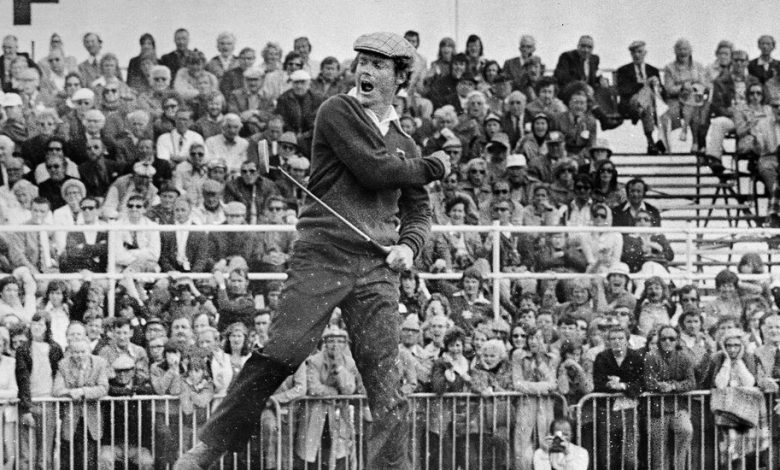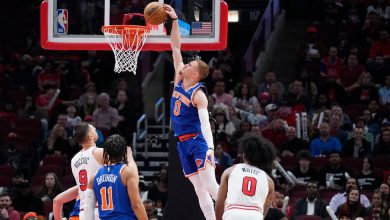The Joys of Links Golf Never Get Old

Tired of the whole golf-gone-wild thing? The one that has turned the men’s professional game into a new toy for Saudi investors? The one that has U.S. senators dragging golf (minus the bag) to work? The one that has left the PGA Tour star Rory McIlroy saying he feels like a sacrificial lamb in the proposed PGA Tour-LIV Golf partnership?
Rest easy. This week, links golf, the windswept and unadorned form of the game, takes its annual turn on golf’s main stage. It’s a chance for golf to tell its origin story all over again. The British Open, the fourth and last of the annual Grand Slam events, is upon us.
The host course, this time around, is Royal Liverpool, also known as Hoylake to those who know the course and its bumpy fairways, which are rendered a pale khaki green by the summer sun and the brackish air.
British Opens are always played, to borrow a phrase from the BBC commentator Peter Alliss, who died in 2020, “in sight and sound of the sea.” They are contested on links courses that are a century old — or much older. Royal Liverpool held its first Open in 1897 and is on Liverpool Bay, though you might think of it as the Irish Sea. The course is a mile from the train station in Hoylake — many fans will get there via Merseyrail — and about 15 miles from Penny Lane in Liverpool.
The lifelong Texan Jordan Spieth, winner of the 2017 British Open, prepared for Royal Liverpool by entering last week’s Scottish Open, played on the links course at the Renaissance Club. One afternoon, Spieth slipped away and played North Berwick, an old and beloved links. Its 13th green is guarded by a stone wall because — well, why not? The wall was there first, and the course goes back to 1832.
“In the British Isles,” the American golf course architect Rees Jones said recently, “they like quirky.”
Promoting a course by way of its architect, a powerful marketing tool in American golf, is not much of a thing in Britain. Years ago, Jones was making a first visit to Western Gailes, a rugged course on Scotland’s rugged west coast. The club’s starchy club secretary — that is, the gatekeeper — told Jones he could play the course if he could name its architect.
Jones offered a series of names.
Wrong, wrong, wrong, wrong.
“Who designed it then?” Jones asked.
“God!” the secretary bellowed.
Spieth’s plan was to play only a few holes at North Berwick, but he found he couldn’t quit. He played the entire course. While on it, he talked about the joys of links golf.
“There’s nothing like links golf,” he said. “The turf plays totally different. The shots go shorter or farther than shots go anywhere else, depending on wind. It’s exciting. It’s fun. You use your imagination. There’s never a driving-range shot when you’re playing links golf.”
In the background, somebody in Spieth’s group offered, “Good shot,” to another player. But you have to be careful with that phrase, when playing on links land.
Nobody could know that better than Tom Watson, the winner of five British Opens in the 1970s and ’80s.
“In 1975, I went to Carnoustie to play in my first Open,” Watson said in a recent phone interview. Carnoustie, on the east coast of Scotland, is famously difficult, bleak and tricky. Watson arrived at the course on the Sunday before the start of the tournament, but the overlords turned him away. He was too early. Good thing there are 240 traditional links courses across Britain.
“So Hubert Green and John Mahaffey and I went down the road to Monifieth,” Watson said. “I hit my first shot right down the middle. Everybody says, ‘Good shot.’ We walk down the fairway. Can’t find my ball. It’s gone. I’m thinking, ‘I don’t know about this links golf.’”
Watson won that 1975 British Open at Carnoustie. And he might have won in 2009 at Turnberry, but his second shot, with an 8-iron, on the 72nd hole, landed short of the green, took a wicked bounce and finished in fluffy grass. He need one simple closing par to win. Instead, his bogey meant a playoff, and Watson, 59 and spent, was doomed. Stewart Cink won.
Watson came into the press tent and said, “This ain’t no funeral.” A links golfer, over time, learns to accept the good bounces and bad ones in any golfing life.’
After Tom Doak graduated from Cornell in 1982 with the dream of becoming a golf course architect, he became a summer caddie at the Old Course at St. Andrews. Doak, now a prominent architect (and the designer of the Renaissance course), has been making a study of links golf ever since. In a recent interview, he noted that older golfers often do well in the British Open. Greg Norman was 53 when he finished in a tie for third in 2008. Darren Clarke was 42 when he won in 2011, and Phil Mickelson was 43 when he won in 2013.
Links golf, Doak said, is not about smashing the driver with youthful abandon. When Tiger Woods won at Royal Liverpool in 2006, he hit driver only once over four days. Greens on British Open courses are typically flat and slow, notably so, compared with, say, the greens at Augusta National. There’s less stress over putting and the game within the game that favors young eyes and young nerves. What links golf rewards most is the ability to read the wind, the bounce and how to flight your ball with an iron.
“In links golf, you have to curve the ball both ways, depending on what the wind is doing and where the pin is,” Doak said. “You have to figure out what the ball is going to do after it lands.”
That takes guile and skill and earned golfing wisdom — all helpful whether you’re playing in a British Open or a casual match with a friend in the long dusk light of the British summer. Open fans will sometimes finish their golf day with a suppertime nine (or more) on a nearby seaside links. Greater Liverpool has a bunch of them. Every British Open venue does.
Playing night golf on those courses, you might also see golf officials, equipment reps, sportswriters and caddies, Jim Mackay among them. Mackay, who is known as Bones and who caddies for Justin Thomas, was Mickelson’s caddie when Mickelson won at Muirfield a decade ago.
Mackay, like millions of other golf nuts around the world, can’t get enough of the game. That is, the actual game, not its politics, not its business opportunities. Mackay knows, as a golfer and caddie, that success in links golf requires a certain kind of golfing magic, the ability to make the golf ball do as you wish.
Playing links golf, he said recently, “is like standing 50 yards in front of a hotel and having to decide which window on which floor you want your ball to go through.”
The caddie as poet. A golfer with options.
Links golf, John Updike once wrote, represents “freedom, of a wild and windy sort.” On some level, the winner at Royal Liverpool will understand that. The winners of all those suppertime matches will, too. Yes, the Open champion will get $3 million this year. But he will also get one-year custody of the winner’s trophy, the claret jug, his name etched on it forever.
Do you know how much Woods earned for winning at Hoylake in the summer of 2006? Not likely.
But many of us remember Woods sobbing in his caddie’s arms. We remember Woods cradling the jug in victory. We remember the clouds of brown dirt that announced his shots, his ball soaring, his club head twirling.
“Hit it, wind,” Woods would say, now and again, to his airborne ball, as if the wind could hear him, and maybe it could.



